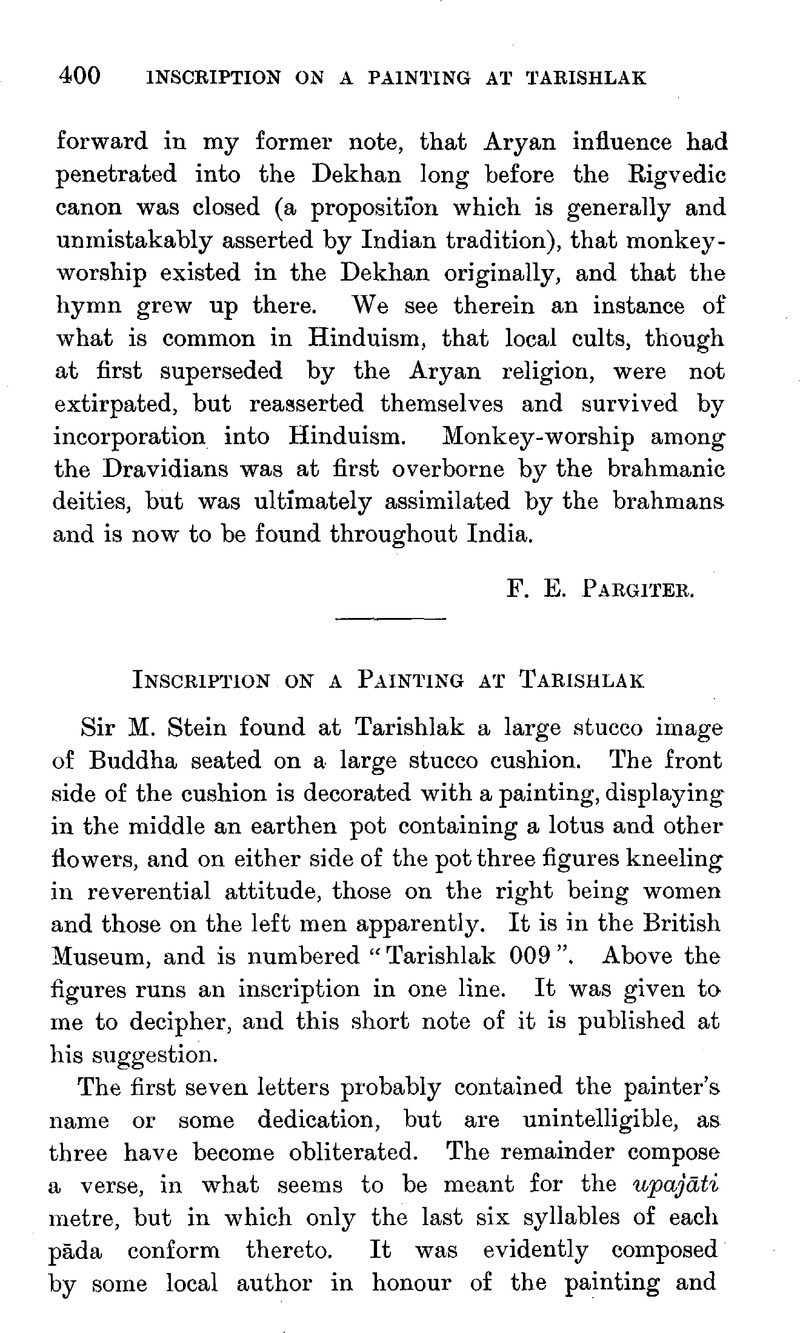No CrossRef data available.
Article contents
Inscription on a Painting at Tarishlak
Published online by Cambridge University Press: 15 March 2011
Abstract

- Type
- Miscellaneous Communications
- Information
- Copyright
- Copyright © The Royal Asiatic Society 1913
References
page 401 note 1 Read probably sūryalataiś.
page 401 note 2 Meant probably for dhātubhiḥ.
page 401 note 3 This may be understood in three ways—tat sthiram asti, or tat sthirayati (which are equivalent), or tat-stho ramati.
page 401 note 4 Read citrito 'yaṁ; but this should be neuter.
page 401 note 5 Read sattvāḥ.
page 401 note 6 Pāṇḍya (if this be the word) may be an abstract noun from pāṇḍu, “creamy whiteness” (which is the ground-colour of the painting); but pāṇḍu also means two plants.
page 401 note 7 Śubhi may = śubha, which means “gorocanā (yellow)”, and also the “plant priyaṅgu”.
page 401 note 8 Sūryalatā is the name of two plants.




